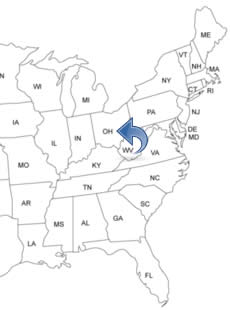OHIO PEOPLE SEARCH!
- ✔ Contact Info
- ✔ Phone Numbers
- ✔ Criminal Records
- ✔ Income Info
- ✔ Neighbors
- ✔ People's Age
- ✔ Property Ownership
- ✔ And Much More
Cleveland, Ohio
Cleveland is located in the north-eastern part and is the second largest city in the state of Ohio. The Forest City. In Cleveland, you fill find world-class museums and cultural events, professional sports and amusement parks. In Cleveland there are more golf courses per capita than anywhere in the United States. It is the center of Greater Cleveland, the largest metropolitan area in Ohio.
To See And To Do In Cleveland
- The Rock and Roll Hall of Fame and Museum
- The Great Lakes Science Center
- Cleveland Museum of Art
- Cleveland Botanical Garden
- Cleveland Museum of Natural History
- Old Arcade
- Terminal Tower On Public Square
- Dunham Tavern Museum
- West Side Market
- Western Reserve Historical Society
- Children's Museum of Cleveland
- Crawford Auto-Aviation Museum
- Temple Museum of Religious Art
- Crawford Auto-Aviation Museum
- Cleveland Metroparks Zoo
- Golf Courses
History Of Cleveland - Timeline
In 1796, Moses Cleaveland and his expedition arrived at the area and his employees named the place Cleaveland. Some of them settled there. In 1797, Major Lorenzo Carter arrived and is considered to be the first permanent settler in Cleveland. Major Lorenzo Carter made friends with the local Native Americans and it was his friendship with Chief Seneca that kept the Cleaveland colony alive.
In 1798, Nathaniel Doan arrived and settled what later became Doan's Corners. He built a log hotel and tavern on the northwest corner of Euclid Ave and Fairmount St. He also built a store on the southwest corner and a blacksmith shop and saleratus factory.
In 1803, about 100 people lived in the village and the mail service extended to Cleveland. In 1807, the first Presbyterian Church was founded. In 1808, Major Lorenzo Carter built the Zephyr, the first ship to be launched in Cleaveland. In 1813, the first courthouse was completed.
In 1814, the village of Cleaveland was incorporated. In 1816, the first bank opened. In 1818, Cleaveland's first newspaper, Cleaveland Gazette and Commercial Register, was published. One year later, in 1819, The Cleveland Herald and Gazette newspaper was published.
In 1826, the first Catholic church was organized. In 1831, The spelling of the city's name was changed by The Cleveland Advertiser. In 1836, Cleveland was incorporated as a city. In 1840, over 6,000 people lived in the city. In 1843, the Cleveland Medical College was established.
In 1847, the first telegraph line was completed and also, the Weddell House Hotel opened. In 1849, the railroad came to the city and the first train arrived. And on the streets, street lights were installed. In 1853, the Cleveland Theater opened.
In 1866, the Cleveland Police Department was established. In 1869, the Cleveland Public Library was established. In 1880, Cleveland Telephone Co. began its service. In 1884, the first electric streetcars were operating in the city. In 1890, a cable car transportation system run in the city.
In 1893, Cleveland's unemployment rate increased dramatically and in 1894, riots broke out among the unemployed who condemned city leaders for their ineffective relief measures. In 1906, the first successful human blood transfusion took place in Cleveland.
In 1908, a fire in the Collinwood school killed 172 students, two teachers, and a rescue worker. It was one of the deadliest disasters of its type in the United States. In 1914, the first electric traffic lights in the USA was installed in Cleveland. In 1920, the Cleveland Museum of Natural History was established. In 1925, the Cleveland airport, now Hopkins International, opened.
In 1930, the Terminal Tower opened. In 1935, the American Prohibition agent Elliot Ness became the Safety Director of Cleveland. Elliot Ness was a famous leader of the legendary team of law enforcement agents nicknamed The Untouchables. The team had a serious impact on the gangster Al Capone's operations which led to Capone's downfall.
In 1966, race riots in the African American community of Hough in Cleveland took place and 4 people were killed and 30 people were critically injured. 275 people were arrested and over 240 fires were reported. People now fled the area and so did the jobs. Nearly 900,000 people lived in the city in 1966.
In 1991, the Key Tower was completed. In 1994, the Gateway Sports Complex opened. In 1995, the Rock and Roll Hall of Fame and Museum opened. In 2011, the Cleveland Strangler, Anthony Sowell, was convicted of murdering eleven women. In 2013, the Cleveland Medical Mart and Convention Center opened.

